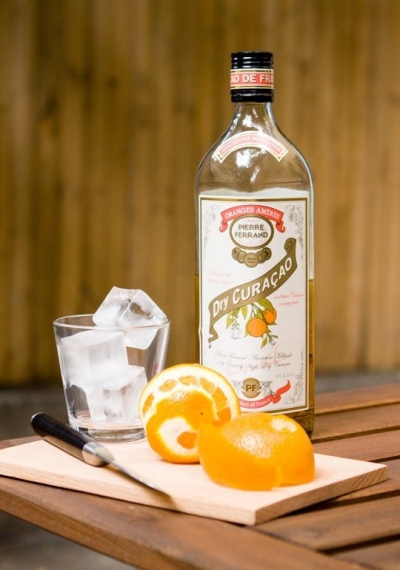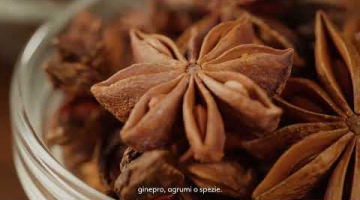Thanks to the boom in cocktail culture, liquor store shelves and back bars are practically buckling under the huge influx of new spirits to the market. Some products are sui generis innovations, never seen or tasted before; others represent a look back at spirits of the past, giving our modern palates a sense of what drinking was like decades and even centuries ago.
Here's the story of one such bottle — dry curaçao — which has made an improbable comeback thanks to two devoted cocktail explorers.
Pierre Ferrand Dry Orange Curaçao, which we first mentioned when the 9-Bottle Bar began delving into orange liqueurs, early this month, belongs to the latter camp.
To round out our coverage of orange liqueur, and to better understand this growing trend of resurrecting antique spirits recipes, we spoke to Alexandre Gabriel, owner of the cognac and liqueur brand Pierre Ferrand.
Why Pierre Ferrand Reformulated Dry Curaçao
Gabriel worked with cocktail historian David Wondrich to develop the Ferrand Dry Curaçao, following the duo's previous collaboration on another throwback spirit, a cognac called 1840 Original Formula.
It was actually over the course of several days of taste tests of prospective recipes for the 1840 Original Formula that the two decided to explore the possibility of a commercial orange liqueur that harkened back to a style that flourished in France in the 19th century but since had gone dormant.
Gabriel says that for more than a decade he's been experimenting, in his free time, with different recipes for sweet-orange liqueurs. After Wondrich learned of this research — and knowing that so many classic cocktail recipes call for "orange curaçao" or simply "curaçao" — he encouraged Gabriel to pursue the project more aggressively.
What Is Old-Style Dry Curaçao?
Their goal was to craft an old-style curaçao in the French tradition. But what does that mean, exactly? Curaçao, Gabriel says, can trace its roots back to what he considers the birthplace of "recreational" spirits, the Duchy of Burgundy, a region that straddles modern France, Belgium, and the Netherlands. According to Gabriel, for a long time, liquors' purported purpose was medicinal, and it wasn't until the development of commercial genever, gin's predecessor, that spirits were treated as leisure goods. Genever took advantage of Europe's abundance of juniper berries as an inexpensive flavoring.
Not everyone is a fan of juniper's pine-forward profile, and curaçao eventually came along to expand the nascent market for recreational spirits. "People were looking for an alternative that was sweeter tasting and more exotic," Gabriel says. "You have to put yourself a few hundred years back — an orange, in Europe, was magical." Up through the days of Gabriel's grandmother, he says, oranges were highly prized and often given as gifts.
The earliest curaçaos were likely rudimentary orange liqueurs — sweetened grain spirits infused with orange peels. The French saw room for improvement, and developed their own unique take on curaçao founded on a fruit-based spirit, namely grape brandy, rather than a grain spirit base. Additionally, they applied a special production method, which Gabriel learned from his grandfather, for highlighting the key ingredient's flavors. "The French use a technique called mise en valeur — enhancing — where you use other ingredients to push forward the main ingredients," he explains.
These other ingredients are present in such small quantities that their own flavors aren't noticeable, Gabriel stresses; their role is to bring out a deeper expression of the main flavor profile. A great calvados, Gabriel says, will have minute amounts of pear to augment the dominant flavors of apple, and a fine pear liqueur might include a hint of quince.
Testing Recipes for Dry Curaçao
To develop just the right blend of supporting ingredients for the Ferrand Dry Curaçao, Gabriel and Wondrich worked through 52 different test recipes. Part of their research also included reviewing archival materials and vintage distiller's manuals and recipe books that they've both collected. "There is so much to rediscover from centuries of practice," Gabriel says, "that I think it would be too bad not to look at it."
For his part, Gabriel has built a broad network through which he's been able to source valuable finds. He says, "I am known throughout every auction house in France… I help them [to] give valuation[s] of old bottles, because I'm a specialist, and there's only a few in France. And in exchange for this, every time they have an old book on spirit making or on liqueur making, I always have, how you say, first take."
Through their research and development, which borrowed from old recipes, they arrived at an approach that starts by creating what Gabriel calls "vegetal infusions": these are the flavor enhancers that help to add complexity to the final product's expression of orange. Ingredients such as sun-dried walnut skins, grilled almonds, and prunes are added to batches of cognac and allowed to soak — an aging process that may take years for their flavor to be thoroughly extracted. After being slightly toasted, the sugar added to Ferrand Dry Curaçao undergoes a similar aging process.
These infusions are blended into a larger volume of what Gabriel calls an orange "essence," made by steeping the sun-dried peels of Haitian-grown bitter oranges in cognac and distilling that infusion. Once the essence and vegetal infusions are blended, the mixture is infused with orange peels once more.
All the effort contributes to a seamless integration of elements. Gabriel says proudly, "You don't taste the puzzle, but the orange in its whole."
thanks to original post http://www.thekitchn.com/dry-curaaos-improbable-comeback-the-9bottle-bar...
















